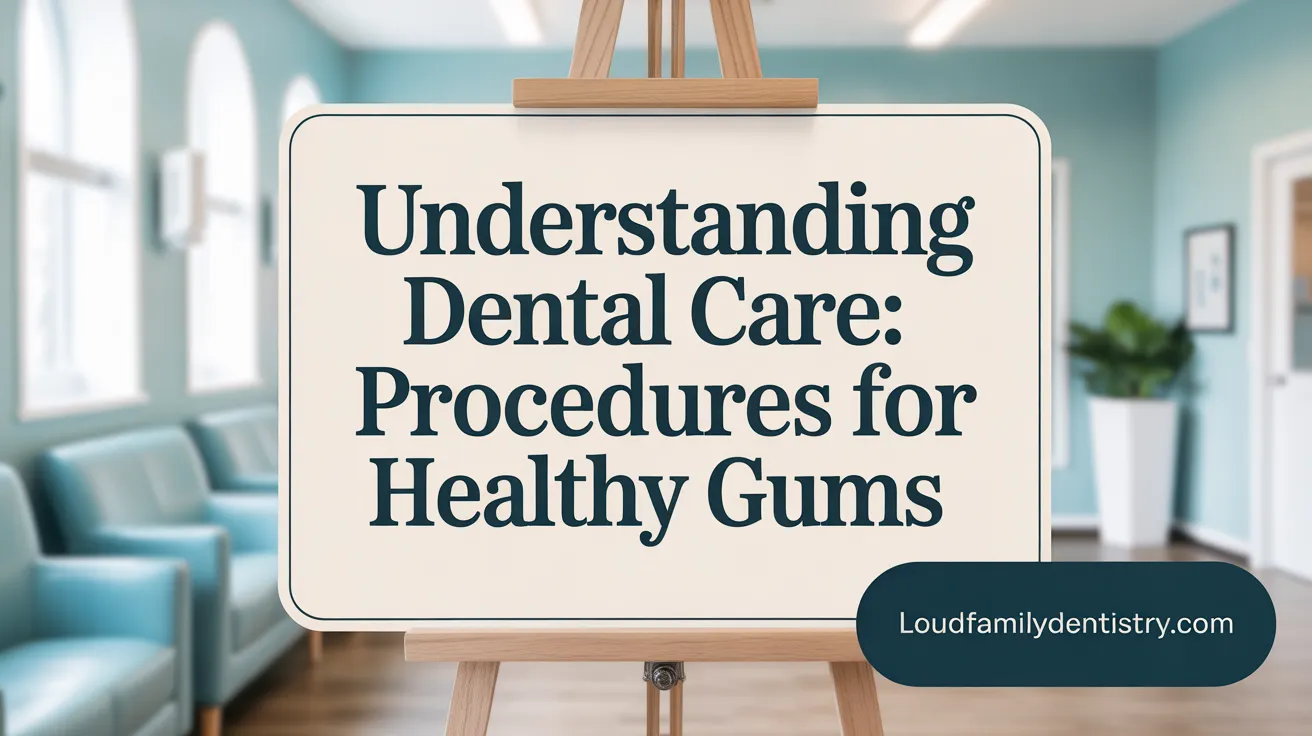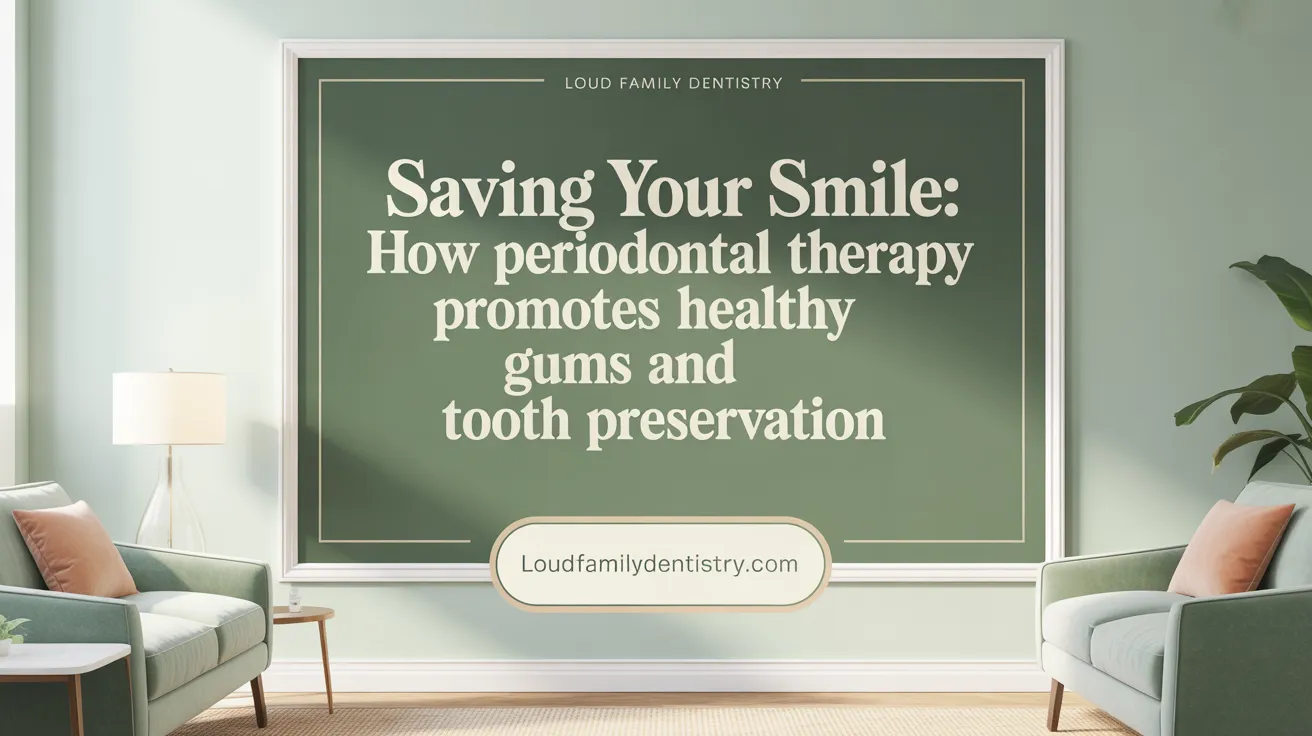Understanding Periodontal Therapy and Its Role
Periodontal therapy, a specialized treatment for gum disease, plays a critical role in preserving the health of your teeth and gums. This article explores how these therapies work, their benefits for oral and overall health, and essential strategies to maintain gum health after treatment. With nearly half of adults over 30 affected by gum disease, understanding and acting on periodontal care is vital for a lasting, healthy smile.
What Is Periodontal Therapy and What Procedures Does It Include?

What is periodontal therapy and what procedures does it include?
Periodontal therapy is a comprehensive approach to treating and managing gum disease, especially periodontitis. It involves various procedures designed to halt infection, repair damage, and restore healthy gum tissue.
One of the most common non-surgical techniques is scaling and root planing. This deep cleaning process removes plaque, tartar, and bacteria from above and below the gum line. It helps reduce inflammation, promote healing, and prevent the progression of gum disease.
In more advanced cases, surgical procedures are necessary. These include:
- Gum Grafting: Covers exposed roots and helps rebuild lost gum tissue.
- Flap Surgery (Pocket Reduction Surgery): Lifts the gums to access the roots and removes diseased tissue to reduce periodontal pockets.
- Bone Grafting: Restores lost bone supporting the teeth, promoting stability.
Emerging treatments such as laser therapy offer less invasive options, using focused light energy to remove infected tissue with benefits like faster healing and less discomfort.
Antibiotics, either topical gels, antimicrobial rinses, or oral medications, are often used alongside other treatments to target bacterial infection.
Ongoing maintenance is vital after initial treatment. Routine checkups, professional cleanings, and personalized oral hygiene advice help prevent disease recurrence.
Overall, periodontal therapy aims to preserve natural teeth, improve gum health, and support overall systemic health, making it an essential part of dental care for those with gum disease.
Understanding Gum Disease: Causes, Symptoms, and Treatment Options
What causes gum disease, what are its symptoms, and what treatment options are available?
Gum disease, also known as periodontal disease, begins with the accumulation of plaque—a sticky film of bacteria—on the teeth. If not removed regularly through good oral hygiene practices, plaque hardens into tartar, which irritates and inflames the gum tissue.
The primary causes of gum disease include poor oral hygiene, smoking, genetic predisposition, diabetes, hormonal changes, and stress. These risk factors can make it easier for bacteria to proliferate, leading to infection and tissue damage.
Symptoms of gum disease often start subtly. Common signs include swollen, red, or purple gums, bleeding during brushing or flossing, persistent bad breath, and gum recession where the gums pull away from the teeth. Some individuals may experience pain when chewing, loose teeth, or noticeable changes in how their teeth fit together.
As gum disease progresses from gingivitis—an early, reversible stage—to periodontitis, it causes destruction of the supporting bone and tissues. This can lead to increasingly loose teeth, permanent tissue damage, and eventually tooth loss.
Effective treatment varies depending on the severity. Initially, professional cleaning procedures such as scaling and root planing remove plaque and tartar from below the gum line. These deep cleaning treatments help reduce inflammation, bleeding, and gum recession.
In cases of advanced periodontal disease, surgical interventions such as pocket reduction surgery, gum grafts, or bone grafting are sometimes necessary to restore tissues and prevent further damage. Use of antibiotics—topical gels, mouth rinses, or oral antibiotics—can assist in controlling bacterial infection.
Regular follow-up care, including supportive periodontal therapy, is essential to maintain gum health after initial treatment. This involves more frequent cleanings and monitoring to catch early signs of recurrence.
In summary, gum disease results from bacterial buildup and risk factors that promote infection. Recognizing symptoms early and obtaining appropriate treatment can prevent severe oral health issues, including tooth loss and systemic health impacts.
How Periodontal Therapy Saves Your Teeth and Gums

How does periodontal therapy prevent or treat gum disease and related dental issues?
Periodontal therapy works by targeting the root causes of gum disease—bacterial plaque and tartar buildup—at the source. Through procedures like scaling and root planing, dental professionals remove these harmful deposits from above and below the gum line, reducing inflammation and infection.
In more advanced cases, surgical interventions such as pocket reduction surgery, gum grafting, or bone regeneration procedures are employed to repair damaged tissues, halt the progression of tissue and bone destruction, and reestablish the health of supporting structures. Laser treatments and minimally invasive techniques like the Pinhole Surgical Technique offer alternative options that help promote healing while preserving healthy tissues.
By controlling bacterial infection and minimizing inflammation, these therapies prevent further tissue damage, stabilize loose teeth, and conserve the jawbone. This comprehensive approach not only stops the worsening of gum disease but also enhances overall oral health, reducing the risk of tooth loss. Importantly, evidence suggests that successful periodontal therapy may also provide systemic health benefits by lowering inflammation that could affect other parts of the body.
Effective management of gum disease through these treatments maintains the integrity of the supporting tissues, promotes healing, and is vital for long-term oral health preservation.
The Importance of Periodontal Therapy to Prevent Tooth and Gum Loss

Why is periodontal therapy important in preventing tooth and gum loss?
Periodontal therapy plays a vital role in safeguarding your teeth and gums from the damaging effects of gum disease. This disease begins with plaque, a sticky film of bacteria that accumulates on teeth, and if not properly managed, can develop into periodontitis—a severe condition that destroys the tissues and bones supporting your teeth.
When gum disease progresses, it causes inflammation, gum recession, and weakening of the supporting structures. Without treatment, this can result in loose teeth or complete tooth loss. Dental treatments like deep cleanings (scaling and root planing) effectively remove plaque and tartar below the gum line, reducing bacterial infection and inflammation.
In more advanced cases, surgical procedures such as flap surgery or grafts may be necessary to restore gum attachment and bone health. These interventions help reattach gums to teeth and promote healing, creating a healthy environment that prevents further deterioration.
Beyond preserving natural teeth, periodontal therapy helps maintain both the aesthetic appearance of your smile and its functionality. Additionally, controlling gum disease lowers systemic health risks. Studies link untreated gum disease to heart disease, diabetes, and respiratory issues. Thus, managing gum health isn’t just about teeth—it also supports overall health.
Regular periodontal care, including professional cleanings and good home hygiene, is crucial for early intervention. Recognizing early signs like bleeding gums, bad breath, or gum recession and seeking prompt treatment can stop disease progression before irreversible damage occurs.
By prioritizing periodontal therapy, individuals can preserve their natural teeth longer, maintain oral functions like chewing and speaking, and enjoy a confident smile—while also contributing to their overall health.
| Aspect | Impact | Additional Details |
|---|---|---|
| Prevents Tooth Loss | Maintains support structures | Removes bacteria, reduces inflammation |
| Restores Gum Attachment | Promotes tissue healing | Surgical and non-surgical options |
| Aesthetic Benefits | Improves smile appearance | Reduces gum recession |
| Systemic Health | Decreases health risks | Links to heart disease, diabetes |
| Disease Prevalence | Common in adults | Nearly 50% of Americans over 30 affected |
| Early Intervention | Saves teeth | Cost-effective in long-term |
Understanding and addressing gum health through periodontal therapy offers lifelong benefits, protecting your teeth, enhancing your appearance, and supporting overall well-being.
Maintaining Healthy Gums After Periodontal Therapy
 Proper care after periodontal treatment is essential to sustain gum health and prevent disease recurrence. An effective way to do this involves diligent oral hygiene routines. Individuals should brush their teeth at least twice daily using a soft-bristled toothbrush and fluoride toothpaste. Daily flossing or using interdental cleaners helps remove plaque from between teeth and along the gum line, which is crucial since bacteria tend to hide there.
Proper care after periodontal treatment is essential to sustain gum health and prevent disease recurrence. An effective way to do this involves diligent oral hygiene routines. Individuals should brush their teeth at least twice daily using a soft-bristled toothbrush and fluoride toothpaste. Daily flossing or using interdental cleaners helps remove plaque from between teeth and along the gum line, which is crucial since bacteria tend to hide there.
In addition, the use of antibacterial mouth rinses, such as chlorhexidine or other recommended products, can help reduce bacterial counts and promote healing. Regular professional cleanings, typically every three to four months, allow the dental team to monitor recovery, remove plaque buildup, and detect early signs of gum issues.
Lifestyle choices significantly impact gum health. Eating a balanced diet rich in nutrients like vitamins C and D supports tissue healing and immune function. Staying well-hydrated helps flush out bacteria and keeps tissues moist. Avoiding smoking is critical, as tobacco use impairs healing and increases the risk of relapse. Managing stress through relaxation techniques also contributes to overall oral health.
Following your periodontist’s specific instructions is vital. This may include taking prescribed medications or using special cleaning agents on the treatment area. Some patients are advised to avoid certain foods that could irritate gums during recovery.
Lastly, being vigilant about signs of infection or gum issues—such as persistent swelling, bleeding, or pain—and seeking prompt dental care ensures timely intervention. Consistent maintenance and open communication with your dental provider are the best strategies to keep gums healthy long term after periodontal therapy.
The Lifelong Value of Periodontal Therapy
Periodontal therapy offers a comprehensive approach to managing and preventing gum disease, with profound benefits for your teeth, gums, and overall health. Through a combination of specialized treatments—from deep cleaning and antibiotics to advanced surgical procedures—this therapy halts disease progression, restores oral tissue health, and safeguards against tooth loss. Coupled with diligent home care and regular dental visits, periodontal therapy not only helps maintain a confident and beautiful smile but may also contribute to improved systemic health by reducing inflammation linked to chronic diseases. Prioritizing periodontal care is an investment in both your oral and general well-being, ensuring your smile remains strong and healthy for years to come.
References
- Gingivitis and periodontitis: Learn More – How is periodontitis treated?
- Top 5 Benefits of Periodontal Therapy For Gum Disease
- How Periodontal Care Can Save Your Smile
- Periodontal Therapy: Healthy Gums Save Teeth
- Healthy Gums, Healthy Smile: The Importance of Periodontal Therapy
- The Benefits of Regular Ongoing Periodontal Therapy
- Periodontal Therapy: 5 Ways It Can Help Treat Gum Disease
- Stay Gum Disease-Free with Regular Periodontal Therapy
- 7 Amazing Benefits Periodontal Therapy Can Protect Your Smile
- Why Periodontal Treatment Is Important for You? Blog
